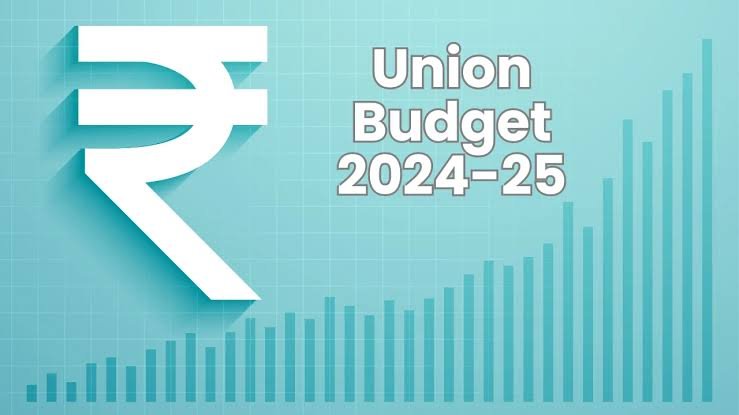The Union Budget for 2024-25 has introduced several significant amendments to various taxes and levies, reflecting the government’s commitment to economic growth, domestic manufacturing, and fiscal discipline. These changes have broad implications for individuals, businesses, and the overall economic landscape of India. Below is a comprehensive overview of the major tax and levy amendments introduced in this year’s budget.
1. Income Tax: Relief and Adjustments
New Tax Regime and Rate Adjustments:
The 2024-25 budget brought a fresh set of income tax slabs under the new tax regime, offering reduced tax rates for individual taxpayers. This alternative to the existing regime, which includes deductions and exemptions, is designed to simplify the tax structure. Notably, the tax rebate under Section 87A has been increased, making income up to ₹7 lakh entirely tax-free under the new regime.
Surcharge Reduction for High-Income Earners:
The highest surcharge rate for individuals earning over ₹5 crore has been reduced from 37% to 25%, lowering the maximum marginal rate from 42.74% to 39%. This change is aimed at reducing the tax burden on the super-rich.
Long-Term Capital Gains (LTCG) Tax:
In a significant move, the budget has reinstated the indexation benefit for calculating long-term capital gains on assets like real estate, gold, and unlisted shares, which was previously removed. Additionally, the budget has clarified that LTCG earned before a specified cut-off year (potentially 2018) will remain tax-exempt.
Standard Deduction:
A standard deduction of ₹50,000 has been extended to taxpayers opting for the new tax regime, providing additional relief to salaried individuals.
2. Goods and Services Tax (GST): Simplification and Rationalization
Compliance Simplification:
The budget has proposed further simplifications in the GST return filing process, aiming to ease the compliance burden on small businesses and startups. Additionally, the threshold for opting into the composition scheme has been increased, allowing more small enterprises to benefit from lower tax rates and simplified compliance.
GST Rate Adjustments:
There have been rationalizations in GST rates for certain goods and services, such as electric vehicles, to promote green energy. Some exemptions and concessional rates have been removed or revised to align with changing consumption patterns and revenue needs.
Expansion of E-Invoicing:
Mandatory e-invoicing has been extended to businesses with a lower turnover threshold, enhancing transparency and reducing the scope for tax evasion.
3. Corporate Tax: Incentivizing Investment
Corporate Tax Rate Reduction:
The corporate tax rate under the new tax regime has seen a slight reduction, aimed at stimulating investment and economic growth. This move is expected to boost corporate profitability and encourage domestic and foreign investment.
Incentives for Manufacturing:
To further incentivize the manufacturing sector, the budget has enhanced deductions for capital expenditure in specific sectors such as electronics and defense. This is in line with the government’s broader “Make in India” initiative.
Extension of Sunset Clause:
The sunset clause for certain tax incentives, including those for special economic zones (SEZs), has been extended, encouraging long-term investment in these regions.
4. Customs Duty: Promoting Domestic Manufacturing
Customs Duty Rationalization:
The budget has made strategic changes in customs duty rates on various items to promote domestic manufacturing and reduce reliance on imports, particularly in sectors like electronics, chemicals, and renewable energy. For instance, the import duty on certain inputs used in the production of electronics and electric vehicles has been reduced to enhance India’s global competitiveness.
Green Energy Boost:
Customs duty concessions have been introduced on equipment and components used in the renewable energy sector to support India’s transition to a green economy.
5. Excise Duty: Public Health and Fiscal Prudence
Excise Duty on Tobacco Products:
In line with the government’s health policy, the excise duty on tobacco products, including cigarettes, has been increased to discourage consumption.
Petroleum Products:
While there were no significant changes in excise duties on petroleum products, the budget reflects the government’s cautious approach, considering global oil price volatility.
6. Agriculture Cess and Levies: Supporting Rural Development
Agriculture Infrastructure Development Cess (AIDC):
Adjustments in the AIDC on certain items, such as gold and silver, have been made to boost domestic processing and reduce imports. The revenue from this cess will fund critical rural infrastructure projects.
7. Capital Gains on Listed Shares:
Reintroduction of LTCG Tax:
The budget has reintroduced the long-term capital gains tax on the sale of listed shares, which were exempt before 2018, with specific exemptions for gains up to a particular year, ensuring that past gains remain untaxed.
8. Digital Economy and Cryptocurrency: Clearer Taxation Rules
Cryptocurrency Taxation:
The budget has provided clarity on the tax treatment for digital assets and cryptocurrencies, introducing a flat tax rate on profits from trading or investing in these assets while disallowing the offsetting of losses.
9. Social Security Contributions: Encouraging Long-Term Savings
Enhancement in Contribution Limits:
There has been an increase in the contribution limits for Provident Fund and National Pension Scheme (NPS), offering higher tax deductions to encourage long-term savings among taxpayers.
10. Miscellaneous Levies: Enhancing Compliance
Increased Focus on Compliance:
The budget introduced stricter penalties for non-compliance in areas like tax collection at source (TCS) and tax deduction at source (TDS), aiming to improve tax collection efficiency and broaden the tax base.
Conclusion
The 2024-25 Union Budget brings a series of targeted amendments across various taxes and levies, reflecting the government’s priorities in promoting investment, simplifying tax structures, and boosting domestic manufacturing. These changes are designed to encourage economic growth, enhance compliance, and ensure a more equitable distribution of the tax burden. Taxpayers, both individuals and businesses, must carefully consider these changes in their financial planning and compliance strategies to maximize the benefits and mitigate potential risks.





